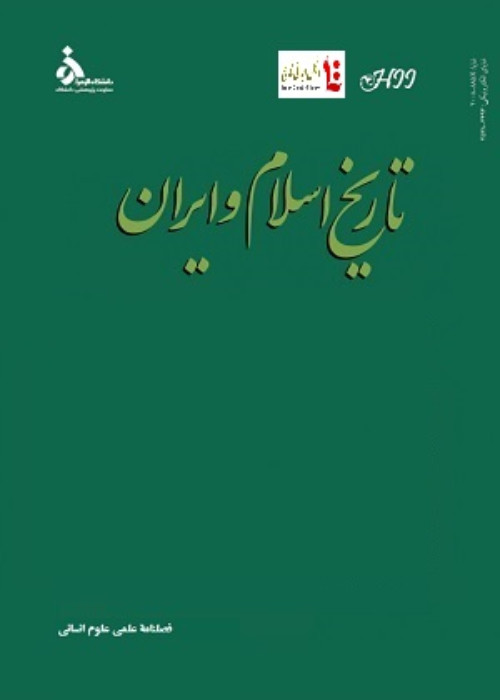Tariqa and Trade;Trading Functions of Naqshbandies in Timurid Period
Author(s):
Abstract:
This article surveys the relation between Naqshbandia path and trading activities in Timurid period (1370-1508AD). Considering the principles of this path, illustrates the cerebral elements supplying the economical activities of its followers. These elements can be grouped in four concepts: solitude in public (sohbat), hidden recitation, serving people, and having occupation.Existance of tuitions concerning economical activities in Naqshbandia path had three important results. First, its propagation and vast influence among farmers and craftsmen as the two main producing forces. Second, supporting it by Timur and his successors. Third, forming a positive view on wealth and political power. These results provided both producing forces and political supports for Naqshbandies. So the leaders of Tariqa could spread their spiritual and material influence in Transoxania and Khurasan.Transoxania was the homeland of Timurid government, the original land and power center of Naqshbandia Khajehs, meeting point of different trading roads and one of the axial regions of the Silk Road. This location and former elements made Naqshbandies very strenuous in trade of this period. From the end of 13th to the beginning of 15th century, in the whole Timurid period, Naqshbandies were of the key elements of trade, especially in Transoxania, Khurasan and axis of Silk Road, from Transoxania to China. The Naqshbandi statesmen of this period build trading centers. The leaders of Tariqa, Khajehs, paid attention to agriculture and trade, in addition of religious activities. They also tried to revoke Tamgha tax. In the other hand, Naqshbandi merchants promote their Tariqa along the roads during their trading journeys.Naqshbandies vast trading activities in this period had three important effects on this Tariqa. First, it spread along the silk road, in centeral Asia and eastern Turkestan till the frontiers of China; the truth whose consequences has remained until our time. Second, Naqshbandi leaders who was interested in trade, earned such wealth and seepage that was unprecedented among Gnostic paths, and made mammonist aspect of Tariqa more vivid. This problem caused some important discussion on the rate of relationship between Tariqa and economical activities at the end of 15th century. The third result was a calamitous effect on Naqshbandi leaders in the second half of the 15th and the beginning of the 16th century (Ahrar family), because of its increasing economical seepage and vast links with Timurid government, Ahrar family shared in their final fate. Some of them were killed by Uzbeks and the rest refuged in the other lands.Surviving the beginning and the end of relationship between Naqshbandi Traiqa and trade in Timurid period, is an occasional narrative of the important problem about the rate of economy and religion along the history of Iran.
Language:
Persian
Published:
History of Islam and Iran, Volume:19 Issue: 4, 2010
Page:
1
magiran.com/p911506
دانلود و مطالعه متن این مقاله با یکی از روشهای زیر امکان پذیر است:
اشتراک شخصی
با عضویت و پرداخت آنلاین حق اشتراک یکساله به مبلغ 1,390,000ريال میتوانید 70 عنوان مطلب دانلود کنید!
اشتراک سازمانی
به کتابخانه دانشگاه یا محل کار خود پیشنهاد کنید تا اشتراک سازمانی این پایگاه را برای دسترسی نامحدود همه کاربران به متن مطالب تهیه نمایند!
توجه!
- حق عضویت دریافتی صرف حمایت از نشریات عضو و نگهداری، تکمیل و توسعه مگیران میشود.
- پرداخت حق اشتراک و دانلود مقالات اجازه بازنشر آن در سایر رسانههای چاپی و دیجیتال را به کاربر نمیدهد.
In order to view content subscription is required
Personal subscription
Subscribe magiran.com for 70 € euros via PayPal and download 70 articles during a year.
Organization subscription
Please contact us to subscribe your university or library for unlimited access!




